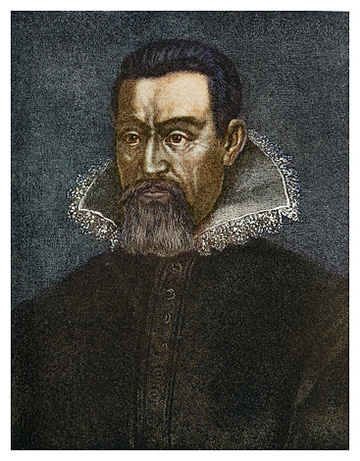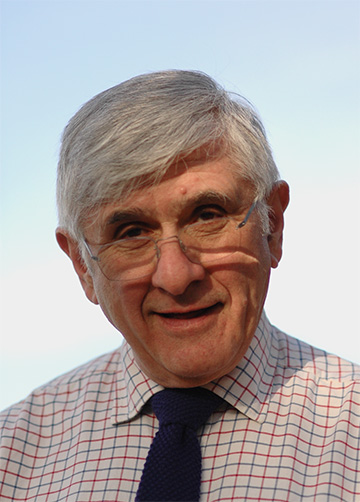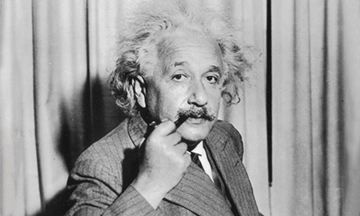![]()
[Image: Dilok Klaisataporn / Getty Images]
Can one be creative on demand? Dennis Sherwood thinks so. The author of the new book Creativity for Scientists and Engineers: A Practical Guide, Sherwood has for nearly two decades run his own consulting firm, the Silver Bullet Machine Manufacturing Company Ltd., that focuses on creativity and innovation.
Sherwood says he’s “always been interested in ideas, innovation and creativity,” an interest nurtured by his long experience in senior roles at corporations such as Goldman Sachs, Deloitte Haskins + Sells and other firms. Alongside that, he has a long-standing passion for science—including M.Phil. and Ph.D. work in biology and biophysics. OPN talked with Sherwood about putting science and creativity together. (Also, see the related story in the December 2022 OPN.)
Your book seems particularly focused on exploding some myths about creativity, scientific or otherwise—particularly the notion that some people are simply “creative geniuses,” and that creativity isn’t a skill that can be nurtured.
Dennis Sherwood: Yes. For a long time—this is up until the late 1980s—I had believed that creativity was a happy accident. You know, you might wake up in the morning and have a great idea or you might not. If you did, great, and if you didn’t, you just carried on. And also that there were some people for whom creative ideas just happened a bit more frequently than others.
So the idea of being able to have ideas on demand now, by anyone, was just off the wall. But I thought about it, I read about it and I experimented with some clients that were very trusting, and developed all the tools and techniques in the book.
You call your company the “Silver Bullet Machine Manufacturing Company.” Why “silver bullet”?
In England, there are phrases using that term—“There’s no silver bullet,” or “We need a silver bullet around here.” So a “silver bullet” is a bright idea, a great idea.
Now, every enterprise, every organization benefits from having great ideas. But rather than having the great idea, it’s much smarter to have the machine that builds them. You then can do it again and again and again. So I call my company the Silver Bullet Machine Manufacturing Company Limited. My role is to help the client build their own silver-bullet machine, so they can do it again and again and again.
One interesting aspect of the book is that you build so much of it around stories. You start in the prologue, recounting Johannes Kepler’s discovery of elliptical orbits. Why start with Kepler?

Johannes Kepler. [Image: Getty Images]
Well, Kepler’s is a great story. And it’s well documented in a book called The Sleepwalkers by Arthur Koestler, which was my main source, and I pay tribute to Koestler in my book.
Kepler’s story is one that people know in the sense of “Okay, Kepler came up with these laws.” But they don’t particularly know the detail. And the story actually exhibits, in one place, all of the attributes of creativity … There are those features about luck, about hard work, about “bisociation”—that’s the term Koestler uses for the bringing-together of previously unrelated ideas—all of which are fundamental features of creativity, and all of which are there in spades in the Kepler story. So it struck me as an engaging way of starting the book. In a way, the prologue tells you everything you need to know!
You mentioned Arthur Koestler—I had no idea that the author of Darkness at Noon was so involved in ideas about creativity. How did those ideas shape your own thinking?
Certainly, for a long time, I believed that creativity was something special; you had to be a special person. And the endgame was the discovery of something “new”—you’re searching for novelty. Indeed, if you look at almost every university’s Ph.D. goals, they say something like “To demonstrate the candidate’s ability to carry out original research.” That word “original.” The idea that creativity is about the discovery of the “new” is pervasive.
I then read The Act of Creation, by Arthur Koestler. And he says, no; it’s about the discovery of a different pattern of things that already exist. His words are all about saying, It’s not about novelty, in the sense of the Old Testament “Let there be …” It’s about the assembly of pre-existing components in a different way.
The word “new” implies totally new. But Koestler says that actually, what you need to do is to find things that already exist, and put them together in patterns, where the pattern has got power, and it’s the pattern that is different from previous patterns. The components are already there. Just like music. Beethoven didn’t invent the notes. But he did put the pre-existing notes together in many exquisite, different, new patterns.
And what does that mean for the creative process?

Dennis Sherwood. [Image: Courtesy of D. Sherwood]
It means that, rather than staring into space and hoping for the sky to fall with a new idea, you’ve got to search very carefully amongst existing ideas, disaggregate them a bit—that’s what I call “un-learning”—and put them together in different patterns. And that was absolutely revelatory to me. Because it took the myth of novelty away. I’m not searching for the new; I’m searching for a new pattern of already existing things.
That’s a lot easier, because the existing things are around me. And if I observe them carefully, and if I’m not too precious about pulling them apart a bit, I can put them together in new patterns.
When that was made clear to me through reading Koestler’s book, it suddenly made creativity an accessible process. You really can design a process to make that happen deliberately, rather than just rely on luck. I found that a truly, truly profound insight, and it’s not in any of the standard books on creativity.
You’ve drawn a lot of illustrative examples of this in the book, too, from the history of science—you talk about Newton’s laws; about the invention of the light bulb; about the discovery of special relativity.
Actually, to me, the most dramatic story in there is DNA. Because if you look at the 20th century and ask what were the great Nobel Prizes, almost everyone would mention the discovery of the structure of DNA. And they’ll mention Watson and Crick by name.
And what Watson and Crick actually did to win that Nobel Prize is just the most amazing story—it’s something that every Ph.D. student should read. Because they did no research. They did absolutely none of their own research, but they read everyone else’s and put it together in a way no one else had done—including the researchers themselves.
Looking a bit closer at this notion of “creative ideas on demand”: You put forward this concept of “InnovAction,” a sort of playbook for generating creative ideas. Could you talk a bit about how this works in practice?
Sure. There’s another really important attribute of creativity. If creativity isn’t about the “new,” what is it about? It’s about difference. And in fact it’s far more important that your idea is different, rather than new, because novelty often doesn’t matter. There’s a whole raft of ideas that are not “new” at all, but are very good.
Now, as soon as you start searching for difference, not novelty, the question is, Different from what? It means different from what we are doing now. That’s a really important principle, because I can see touch, feel, experience what is happening now.
So combining that with Koestler, the process says you never need ideas relating to something which is remote from your own experience. If you’re doing work in photonics, you want ideas on photonics, not about running a shoe shop.
So then the starting point for the creative process is …
It’s very, very detailed observation about what is happening now. The last thing you want to do, when you’re trying to be creative, is to say, “What ideas have you got?” It’s the wrong place to start. The right place to start is, “What are we doing now—let’s observe very carefully what we’re doing now.” That’s step one.
And you observe it in great detail, and you try to decompose it into its elements. So you might, say, want to have a different way of doing spectroscopy. So let’s describe a spectrometer in great detail, and decompose it into all its structural elements. Having done that, you then say, “Well, if I’m searching for something different, something about this list of features that I’ve just described and shared with you has to be different.”
So in a nutshell, the process says, start with something—a focus of attention, something you want to have ideas about. That could be something tangible—How do we reinvent a spectrometer? It could be something more intangible—How do we behave better around here as a team? You then describe that phenomenon in as much detail as you can, using as many people, as you can that have experience of that. And you get a long list of stuff. You then say, “How might [whatever it is] be different?” … And out of that exploration, ideas just tumble out—they really do.
It all sounds, coming from you, rather straightforward.

Generating creative ideas, says author Dennis Sherwood, doesn’t mean you need to be an Einstein. [Image: Hulton Archive / Stringer / Getty Images]
Yes, it is. And it’s a process that you can execute in a matter of only a few hours. You can even do it by yourself, and I do it by myself in many situations. But it’s much richer if you do it in small teams.
For OPN’s audience, I think one of the most interesting chapters in there will be the ones in which several scientists tell their own stories—including Optica Fellows Anatoly Zayats, Miles Padgett and Bill Barnes. How did you settle on these examples and these scientists?
They’re people I’ve had the great pleasure of working with. I know them all, and so I know their areas of interest well. And when the idea for the book was coming together, it occurred to me that there were a lot of stories in the book, but they were all from history.
But there are some really, really good people out there, working today, and I approached them and they very kindly wrote their stories. These are people both from academia and from engineering companies. And I just approached them and said, “I’m writing this book on creativity. Would you be kind enough to write your own experience?” And look what happened!
Another example of creativity at work, I guess. It is interesting to me, though, that you also devote a big section of the book not to creating ideas, but also to evaluating them.
Yes. That’s a big part of the process. And it’s harder than having ideas in the first place. But it’s really, really crucially important.
The issue here is that not all ideas are good ones. Some of them are really bad. And it’s crucially important that you distinguish good ideas from bad ones, so that you don’t waste time, and money too, working on poor ideas. But evaluation is really difficult, because inevitably, you’ve only got limited evidence. It’s an idea—how on earth do you judge whether an idea is a good one or a bad one?
So yes—a lot of people think that with creativity, everything’s over when you’ve had the idea. No, it’s only just starting. Because you have to dispense with ideas that are poor, and focus energy on ideas which are good. Corporations usually have all sorts of processes to do that. In the academic world, it tends to be the filter of the granting agency, which has the power to fund an idea or not. So the question is, How do you present your idea to the funding agency and persuade them that it’s a good one, while avoiding presenting ideas that are intrinsically weak?
In fact, innovation—which is making an idea real, and which is where you want to be—is different from and bigger than creativity. As I say at the front of the book, innovation is having the idea in the first place, that’s creativity; then doing the evaluation wisely, and not wasting time on poor ideas. Usually, the next step is a lot of development, and most research is actually about developing the original idea. And then there’s the final implementation.
And that final implementation is context dependent. If you’re a research scientist, the implementation might be publications or a Ph.D. thesis or conference proceedings. If you’re an engineer, it’s a new product on the market. But that four-stage process of creativity to start with; wise evaluation; development, to iron out the bugs; and then making it real is ubiquitous. And evaluation is the most important and the most difficult.
That whole notion of the context for innovation also touches on the discussion at the end of your book, about the role of “culture” in creativity. What sort of things are necessary to kind of build a culture that encourages or supports creativity? What does an organization or workgroup or even a society need to think about?
Creativity—having ideas—might be the sort of thing that maybe a corporate might do once in a while at an off-site, and then everyone goes back to their day jobs. In an academic environment, creativity is much more current in the everyday work. And scientists and engineers are hugely creative. Of course, they wouldn’t be that if they weren’t. Hopefully, my book can help turbocharge that.
But you certainly come across some teams where creativity flourishes, and others where creativity feels like hard work. And a lot of it depends on interpersonal behaviors, on the leadership and the everyday language that is used within the team.
And there’s one aspect of academic environments, which I certainly find in the UK, that I think crushes creativity. It’s disguised as “academic challenge.” Here’s an example: Perhaps someone young is at a meeting, and suggests something, the immediate response is, “But what about this?,” or, “Have you read that paper?,” or, “That won’t work because …” That’s not particularly aggressive; it’s just the way things are done. But I remember when I was doing my own Ph.D., I got crushed by that—my feeling was, “Well, I’ll shut up; I’m not one of the big guys; I’ll just sit here and listen and take notes.”
And that’s why I think leaders of scientific teams could well enjoy reading the book, to see what they might even do differently to make creativity happen. There are all sorts of things. It’s about language. Performance measures in organizations, too, are really mission critical. The kinds of criteria that you have for promotion in organizations—those drive your behaviors. One thing I say to my corporate clients, is, Do you have in your promotion criteria to more senior management “Encourages creativity in their team” as a requirement? If they don’t have that as an item, don’t be surprised if it doesn’t happen …
Dennis Sherwood’s book Creativity for Scientists and Engineers is available from IOP Publishing.
